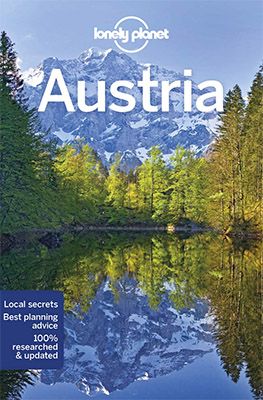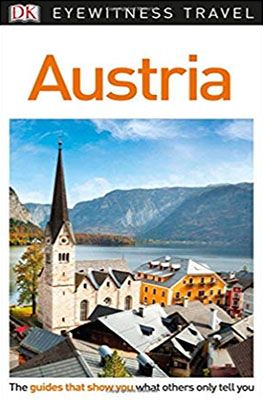In transit from the Salzburgerland region to Germany, we passed through Salzburg. Many years ago, we already lost our hearts to this fourth city of Austria. Once again, the birthplace of Mozart managed to completely charm us. The old, baroque city is one of the best-preserved city centres in the German-speaking world. It is no coincidence that the city has been on UNESCO’s World Heritage List since 1997. In this blog, we tell you why Salzburg is so much more than just Mozart.
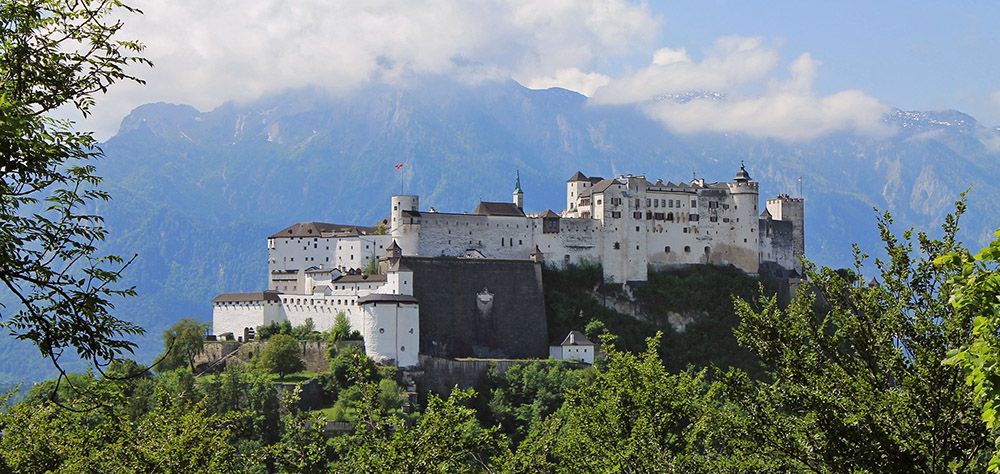
History of Salzburg
Even before the arrival of the Romans, settlements formed on the site of today’s Salzburg. The Romans merged the villages and named it Juvavum. The town developed into an important city in the Roman province of Noricum. By the end of the 7th century, however, there was hardly anything left of the city. This changed when Saint Rupert from Bavaria became bishop of the area. He named the city “Salzburg” (salt fortress) because of the salt transport on the Salzach River.
It was not until the end of the 14th century that Salzburg became independent of Bavaria. The city remained the capital of an independent state until 1805. It was ruled by prince-archbishops, who became wealthy from the salt mines in the south of the city. That wealth attracted architects from Italy and other European countries. They built the most beautiful, religious structures that can still be admired today.
Since 1816, Salzburg has been a city in Austria. At the end of the Nazi occupation, over 40% were bombed. Fortunately, most of the baroque buildings were spared. Strolling through the streets and squares in the old town, nothing reminds you of that period. What remains is a beautiful old town with beautiful squares and stately buildings. A place we love to keep coming back to.
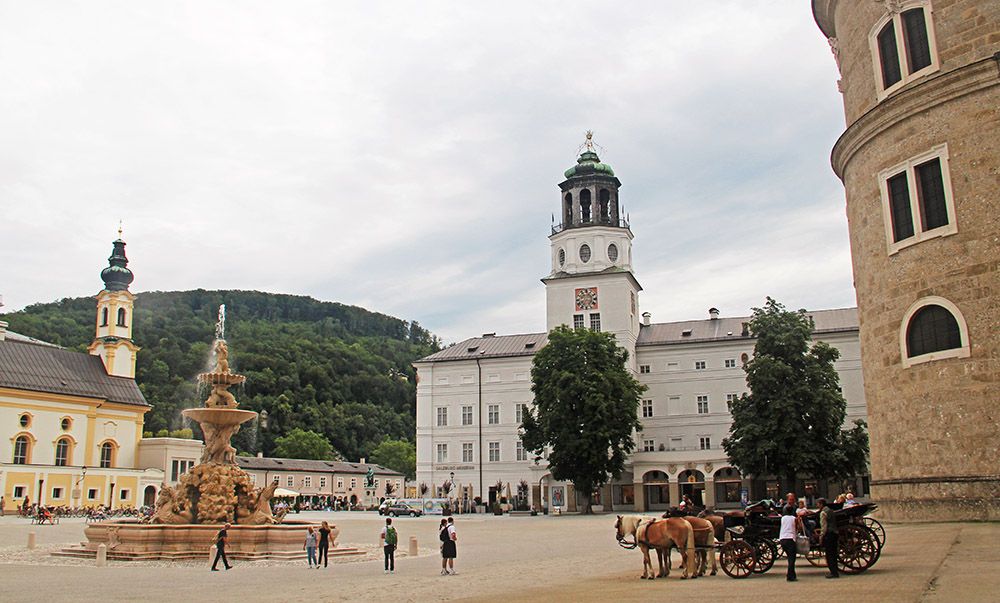
Highlights of Salzburg
An ideal way to get a first impression of Salzburg is with a guide from Baja Bikes. This is a good way to learn your way around the city and see the most important highlights. We regularly book a bicycle tour with Baja Bikes. They have good material and know the most beautiful and safest route through the city. In Salzburg, an English-speaking guide accompanies you. The theme of the tour they offer is ‘the sound of music’. Many recordings for the famous film took place in Salzburg.
In this blog we describe some of the highlights that you simply cannot miss.
Birthplace and residence of Mozart
Say Salzburg, and you think of Mozart. The city lives and breathes this brilliant 18th-century composer. At Getreidegasse 9, you will find the birthplace of Wolfgang Amadeus Mozart. The Mozart family lived there from 1747 to 1773. Wolfgang himself was born there on 27 January 1756. The “Hagenauer Haus” is now a very popular museum.
What makes the museum so special is its versatility. You will not only find exhibits about the musical works of this child prodigy. The museum also takes you into the spirit of the times. You will get to know the rest of the family and see how they lived. As a lover of his musical works, I found our visit more than worthwhile! You can find more information on the museum website. Take a look at the virtual tour if you want a taste.
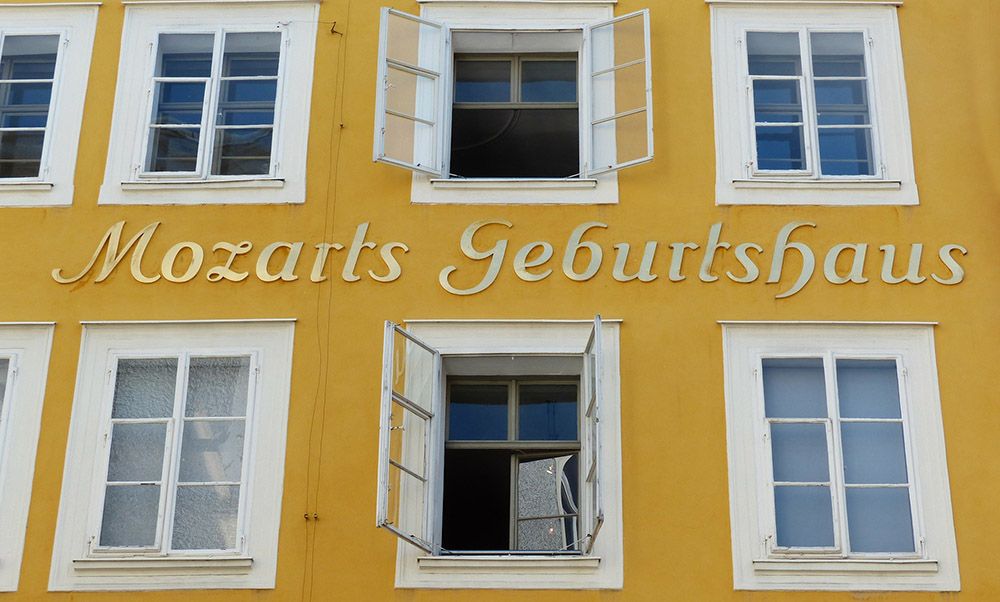
In addition to the birthplace, a visit to the Mozart residence belongs on the list of Mozart music lovers. In 1773 the Mozarts moved to the so-called “Tanzmeisterhaus” on today’s Makartplatz. Indeed, the birthplace became too small for the family and concerts. The second floor of the restored house now houses a museum. In addition to Mozart’s pianoforte, you will find many original documents and portraits here.
Mozart City Tour
As a true lover of Mozart’s musical works, you can also book a Mozart City Tour. The tour takes you through the old city centre, among other places. Besides the birthplace and residence of Mozart, you will also visit the Mozarteum (conservatory). And other places that are intertwined with the life of Wolfgang. Think here of the Mirabell Palace, the Cathedral and the cemetery with the family tomb. You book a tour for example through Viator.
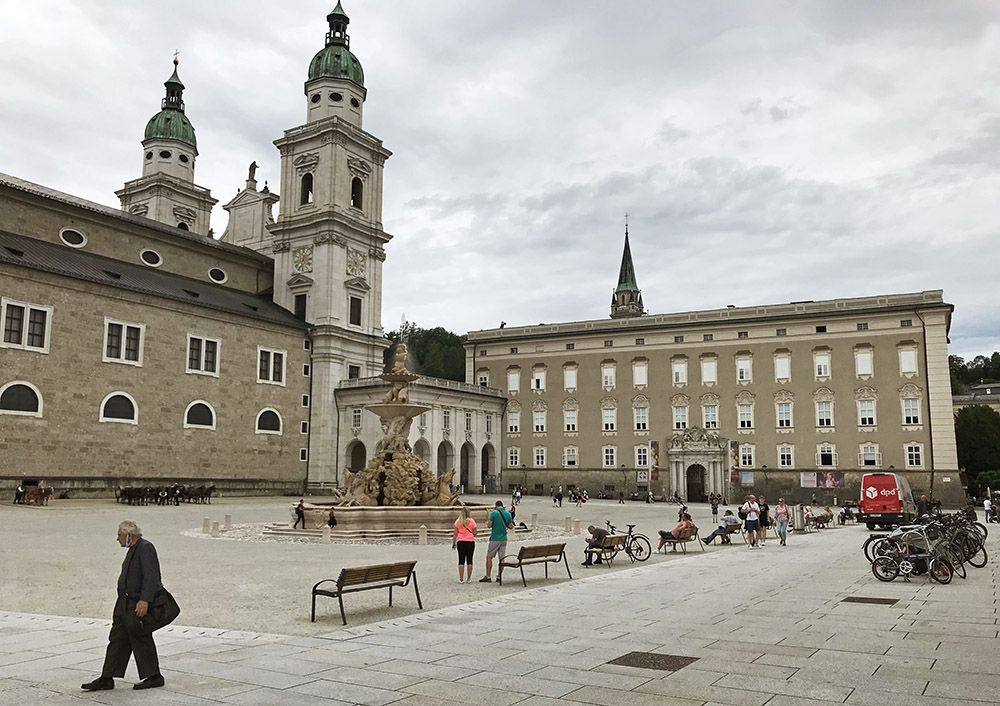
Fortress Hohensalzburg
From whichever direction you come, you see the fortress Hohensalzburg beautifully towering above the city. In 1077 they started the construction. In the centuries that followed the fortress was further strengthened. In the mid-15th century four more towers were added. All this time the prince-archbishops of Salzburg lived there. At the time of Napoleon, the last prince-archbishop left the castle. In the mid-19th century, Franz Joseph I of Austria turned it into a barracks. Today it is only a tourist attraction.
Measuring 250 by 150 metres, it is one of the largest medieval castles in Europe. Standing at the foot of Festungsberg you have no idea of this. However, we walked up via the ring road and were exhausted when we arrived at the gate. Once inside you come through long wide corridors to a courtyard. Only there do you get a good impression of the imposing fortress with its meter thick walls. The castle itself stands in the middle. Around it are the buildings that used to serve as inn, workshop or whatever.
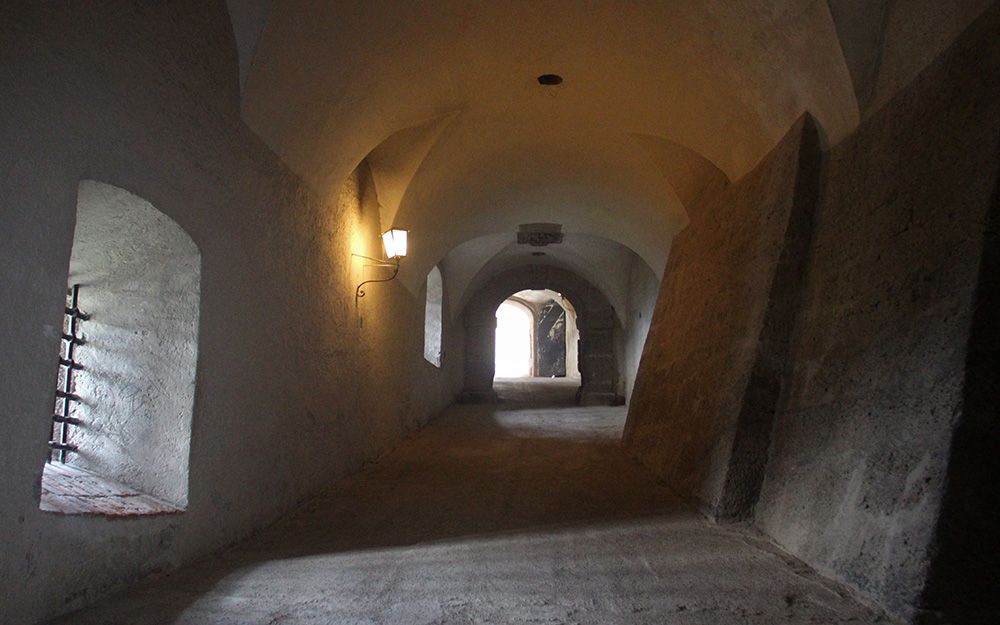
Museums in the Fortress
From the courtyard, the climb continues through the fortress. There are also several exhibits here about courtly life. Besides the Fortress Museum you have other small museums. We unfortunately had to skip these due to time constraints. What you should not miss, however, are the luxuriously furnished living quarters of the prince-archbishops. The golden hall and golden room should also not be left out of your visit.
The reward for your climb is sweet: on the outside of the fortress, you get a breath-taking view of Salzburg and the Alps. Settle in on one of the terraces on your way back. Gain strength for your walk with a drink and enjoy your impressive visit to this fortress.
By the way, since the end of the 19th century there has also been a cable car. For a fee you can skip the steepest part of the climb to the fortress. We did not do that because the walk to it is an attraction in itself. More information can be found on the official website of the Festung Hohensalzburg.
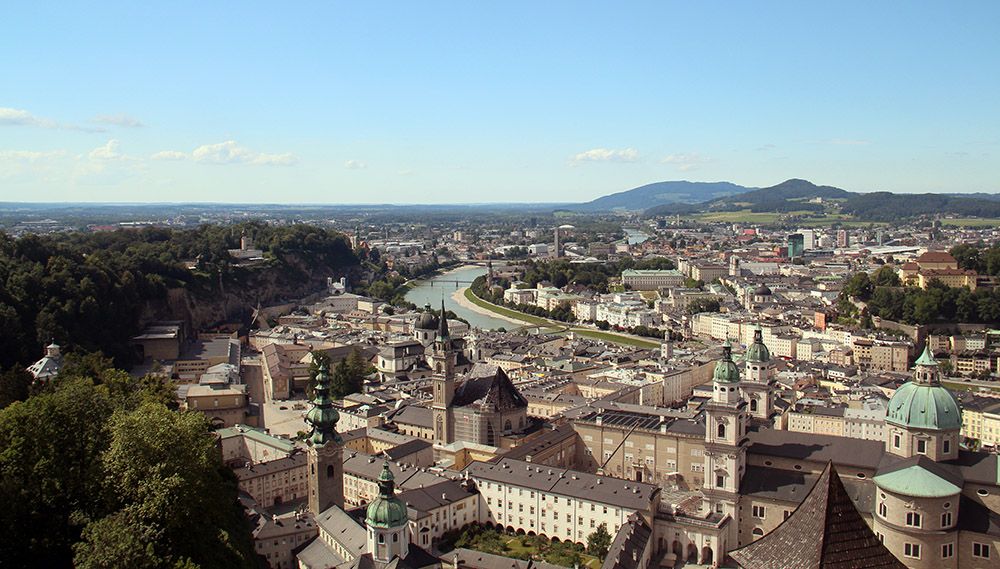
Slot Mirabell
At the beginning of the 17th century, Prince Archbishop Raitenau had this little palace built on the banks of the Salzach. The archbishop suffered from gout and no longer wanted to walk through the narrow streets to his mistress. The construction of the castle was the solution. Raitenau was later deposed and arrested. His successor rebuilt the castle in opulent Baroque style.
However, its current neoclassical appearance dates from the early 19th century. The castle was then restored after a fire and decades later bought up by the city. Today it is a UNESCO World Heritage Site and a tourist attraction.
Highlights include the beautiful garden and the marble hall where Mozart gave concerts. Recordings were also made here for the Sound of Music. In the film, Mary and the children dance around the Pegasus fountain and sing the song “Do Re Mi”. At the end of the scene, the Trapp family stands on the steps of the Rose Hill.
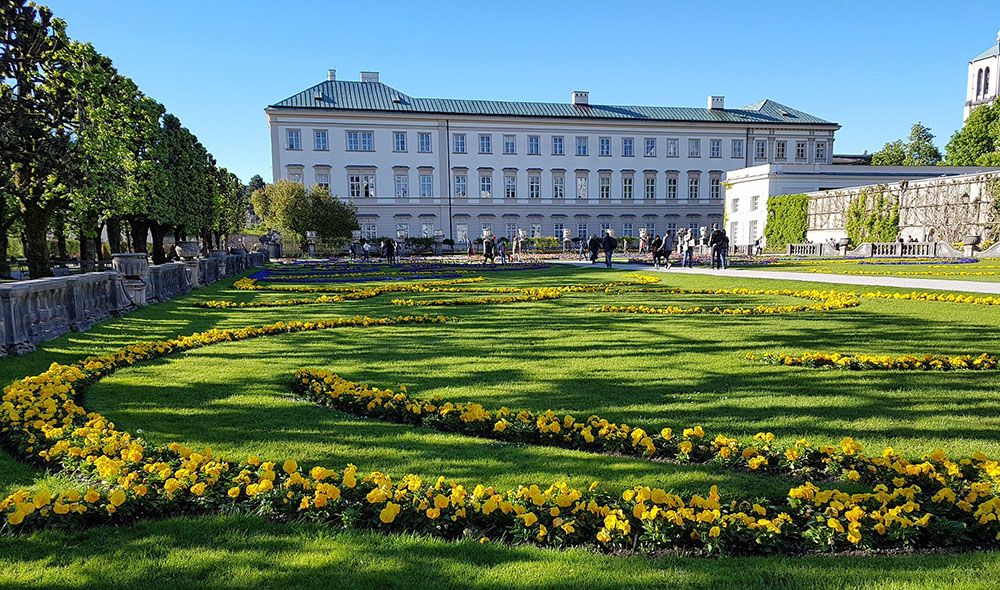
The Getreidegasse
The Getreidegasse is not only the street where you find Mozart’s birthplace. It is also the vibrant heart of Salzburg’s Old Town. Characteristic of the homes in Getreidegasse are the beautiful doors. Also the windows that get smaller and smaller from the second floor up. Moreover, you regularly see important dates or the names of former owners on the facade.
Typical of Salzburg’s historic district are also the many houses with passages. The front and back of the buildings open directly onto different streets. In the arcades or passages you will encounter art galleries and stores. It’s a bit like a bazaar but in baroque style. Really nice to walk through!
Sebastian Cemetery and the Capuchin Monastery
During our daily walk from Neustadt to Altstadt, we always passed the cemetery with the Mozart family tomb. The underpass to it is hardly noticeable. So, we ended up at the fully walled cemetery by accident. Against the walls of you find the most ludicrous, immensely large memorial stones.
In the middle of the cemetery is a small chapel. Around it you will find memorial stones and graves that do not suggest that wealthy or famous people have found their resting place there. Yet here you will find the family tomb of Mozart. Wolfgang himself is buried in Vienna.
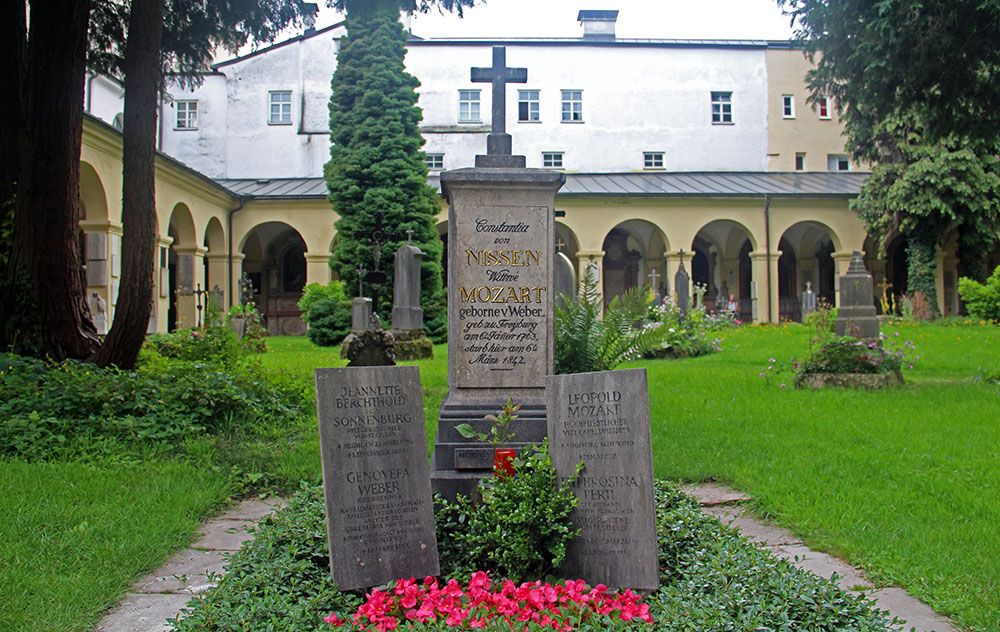
Walking from the cemetery towards the Altstadt you will see an underpass on your left. Looking for a nice vantage point, we took this side road once. The wide path (Kapuzinerberg) zigzags steeply upwards and eventually ends up at the Kapuziner Kloster. The special thing about the climb is the symbolism of the Easter story. Right before you arrive at the small monastery you see the three crosses of Golgotha.
Immediately after the monastery you have a beautiful view of the old town and the fortress of Hohensalzburg. From here a short walking path runs along the city wall of Neustadt. A narrow winding path between the old houses brings you to the Salzach River. If you have more time to spare, take the walk from the monastery towards the Mozart Monument. The walk eventually leads to the very best viewpoint from the Kapuzinerberg on the Hohensalzburg Fortress.
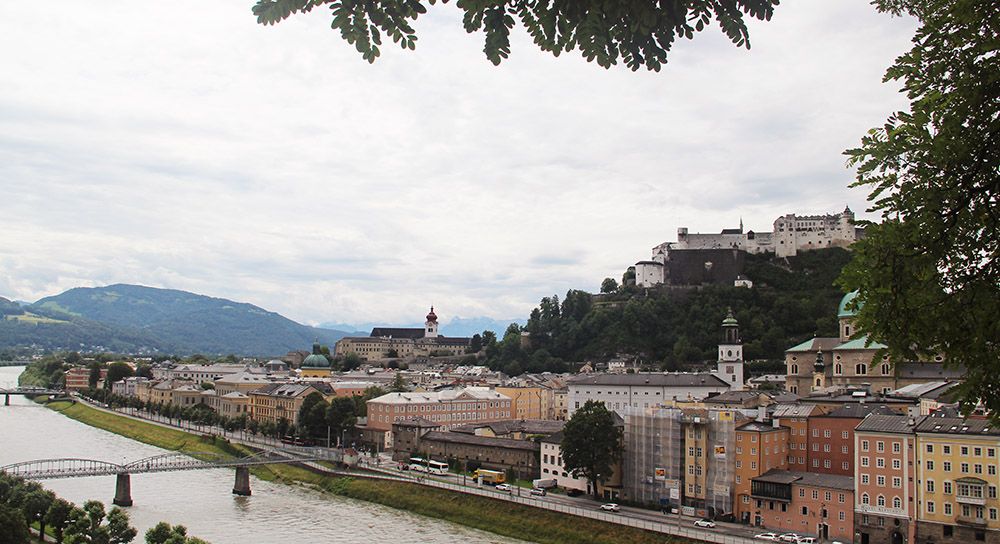
Day excursion to the Obersalzberg in southern Germany
On our way from Salzburgerland to Salzburg, we passed through Berchtesgaden at the Obersalzberg. Berchtesgaden is a small, picturesque German town in Bavaria about 30 km south of Salzburg. In the Middle Ages, the town gained income from the production of table salt. You can still visit the Berchtesgaden salt mine as a tourist.
Since the late 1930s, Berchtesgaden became known for other reasons. As a birthday present, Adolf Hitler’s secretary had a villa built at an altitude of 1834 meters. Due to fear of heights, the Nazi dictator did not like the “Kehlsteinhaus”. Immediately after the Second World War most of the buildings were demolished. However, the Kehlsteinhaus (called Eagle’s Nest by the Americans) remained in its original state.
We ourselves did not go to the Eagle’s Nest. Instead, we took the fantastic Rossfeld Route. This is one of the most famous toll roads in Germany. The Rossfeldstrasse is over 15 kilometres long and winds up to an altitude of 1570 meters. Along the way you get breath-taking views of Salzburg and the Austrian Alps. Various walks can be made from the many parking spaces along the route. The cheerful tinkling of the cowbells made the Salzburgerland experience complete for us!
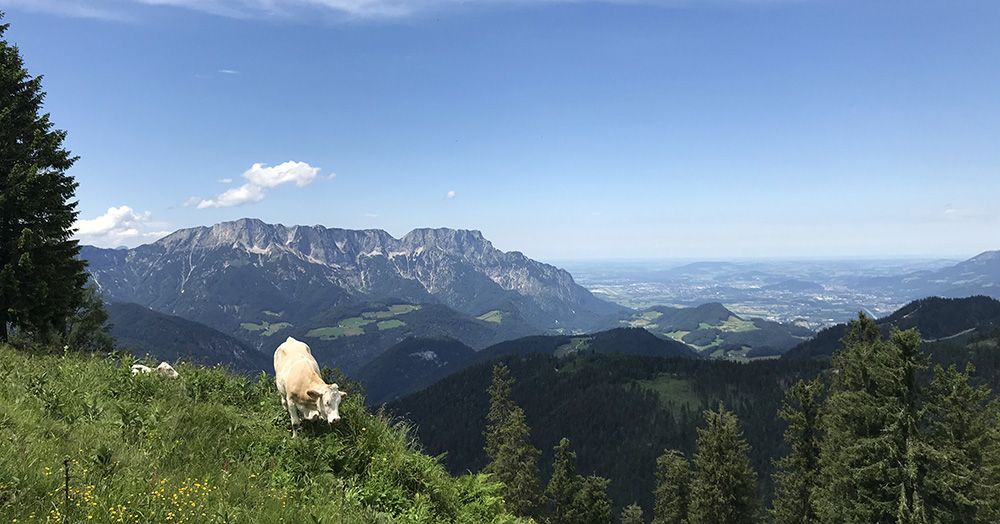
City trip to Salzburg: practical matters
Best time to Salzburg
The best months for a visit to Salzburg are May and September. It is then comfortably warm with relatively little precipitation. Because of its location north of the Alps, there is quite a bit of rain in the summer. So too when we were there. On the day of arrival, it was first oppressively hot. In the evening we had a real storm. The next day it was fortunately dry and we could enjoy some terrace life.
Transportation to and within the city
Salzburg is easily accessible both by plane, train and car. If you come with your own car, you need a vignette for the highway. In the months of October to April your car must have winter tyres.
The best way to explore Salzburg is on foot. This is especially true for the Altstadt (the old town). You can also, entirely in style, be transported by a carriage with two horses. Another possibility is the (trolley) bus or cab. Of course, you can also drive your own car, but this is not always easy. Parking costs are not too high.
Finally, an excellent option is to rent a bike. Salzburg has more than 100 kilometres of bicycle paths. By this means of transport you are usually faster than by bus, car or on foot. If you do not want a bicycle tour with Baja Bikes, but just want to rent a bike, you can also do that at Radsport Wagner or Road Bike Rental.
Accommodations in Salzburg
There is plenty of accommodation on offer in Salzburg. If you come by car as we did, choose a stay with private parking. The last time we stayed at the Best Western Plus Amedia. Fine, comfortable hotel in Neustadt but a bit of a walk to the old town.

